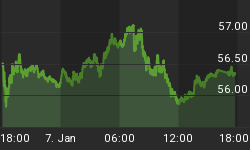The horse is here to stay but the automobile is only a novelty – a fad.
JP Morgan Chase & Co., Bank of America, and Citigroup announced on February 2nd, 2018, that they are halting all Bitcoin and cryptocurrency related purchases on their credit cards. The justification given is that it was a protective measure for their clients, and that they did not want to take the credit risk associated with the volatile assets. Could there be an ulterior motives for the hostility on cryptocurrencies from those within legacy finance? Digging into the past, we can see similar patterns emerge with the rise of the automobile industry, and the resistance it was met with by the establishment prior to an eventual concession.
From Horse & Carriage To Automobile

Ford’s 1907 horseless buggy | source: spiritualpilgrim.net
Proliferation of automobiles came to the fore with advent of the internal combustion engine in the late 1800s, a pioneering and innovative technology. It took time, but this would eventually dethrone the horse as the key mode of land transportation. Similar to Bitcoin representing a pioneering financial innovation today, automobiles were met with great resistance by the establishment all over the world.
The "Locomotive Acts" Compared To Modern Day Anti-Cryptocurrency Legislation
The “Locomotive Acts” were introduced over the mid-to-late 1800s by the British Parliament, setting a series of redundant and overbearing restrictions on drivers of engine-powered transport. The intention was to keep the roads “safe” (does this sound familiar?) for horse-driven carriages and pedestrians.
One rule stated that a person was required to walk in front of your automobile with a red flag at all times. Another declared that the speed limit within towns was 2 MPH (for reference, the average human walking speed is ~3.1 MPH). This was around the same time where anti-automobile propaganda in media was common. It was not unusual to see entirely falsifiable articles in newspapers published with headlines like “Beware! Reaching speeds higher than 20 MPH may suck breathable air out of your vehicle and suffocate you”.

Anti automobile propaganda | source: http://news.ourontario.ca
A depiction of an automobile flooded, and in a ditch, with two injured passengers. All while a comfortable McLaughlin Carriage co. coach drives by.
The rules outlined within the Locomotive Acts already appeared antiquated by the turn of the 20th century. Proliferation of automobiles became the norm, culminating with the production of the famous Ford Model T in 1908. This was a mere few decades after the many of the more restrictive “Locomotive Acts” were pushed by the governmental body – and were consequently backtracked on one by one.
Certain legislators and demographics in the US were just as hostile to the new technology during the same time. One source states that a certain “Farmers’ Anti-Automobile Society of Pennsylvania” formed sometime prior to 1910, pushing for the following rules to be implemented for general safety:
1. Automobiles traveling on country roads at night must send up a rocket every mile, then wait ten minutes for the road to clear. The driver may then proceed, with caution, blowing his horn and shooting off Roman candles, as before.
2. If the driver of an automobile sees a team of horses approaching, he is to stop, pulling over to one side of the road, and cover his machine with a blanket or dust cover which is painted or colored to blend into the scenery, and thus render the machine less noticeable.
3. In case a horse is unwilling to pass an automobile on the road, the driver of the car must take the machine apart as rapidly as possible and conceal the parts in the bushes.
Despite the rules being pushed under the guise of safety, the agenda is clear.

Ford Model T announcing the widespread acceptance of the next emerging technology: the automobile | source: cloudlakes.com
Here is what one alleged steam engine expert stated on the efficiency of horses compared to motors in 1894:
[Horses are not only] self-feeding, self-controlling, self-maintaining and self-reproducing, but they are far more economical in the energy they are able to develop from a given weight of fuel material, than any other existing form of motor.
Of course, at this point the combustion engine was already in effect, but was perhaps not in the interest of anti-automobile legislators to recognize it. This can be analogized to the failure of the mainstream to recognize Bitcoin’s scaling solutions in the form of the Lightning Network, instead continuing to push the arguably false rhetoric of “blockchain, not bitcoin“.
From Banked To Bitcoin
The message sent with the Locomotive Acts at the turn of the 20th century is similar to the message pushed by anti-cryptocurrency legislators today: jump through the series of bizarre hoops we set out, or return to familiar technology which serves to our advantage.
Considering the exponential pace at which technology is growing, it would not be surprising if the JP Morgans and Citibanks are forced to backtrack on their anti-cryptocurrency rulings within the decade as Bitcoin establishes its place in the mainstream.
Case in point: The European Central Bank (ECB) has already conceded today that it will likely hold bitcoin as part of its reserves, despite their skeptical or outright dismissive language pointed at the cryptocurrency late last year.
By Daniel Dalton via Crypto Insider
















